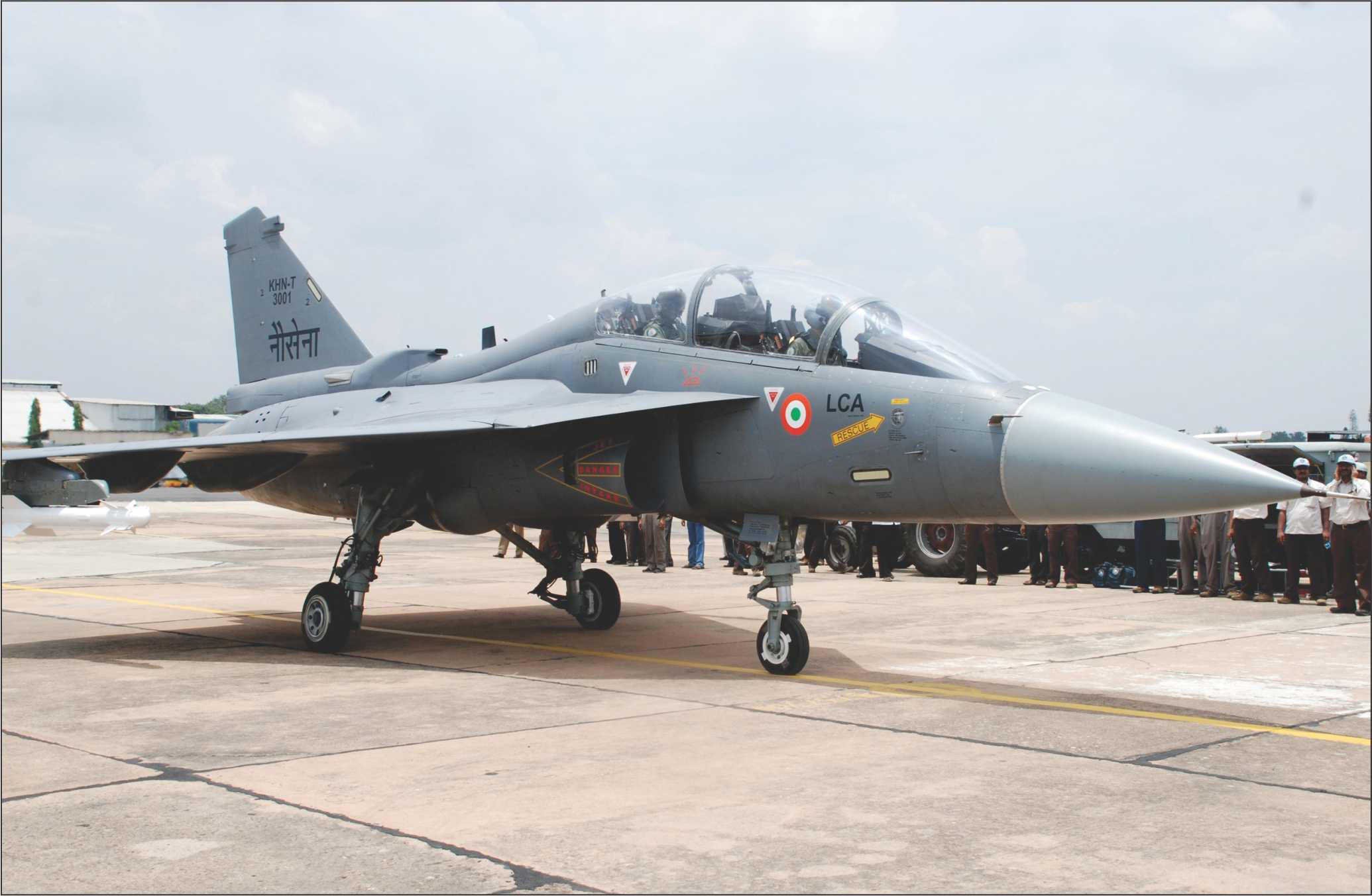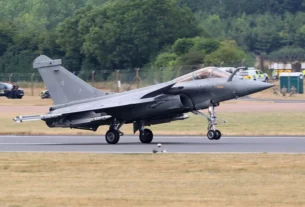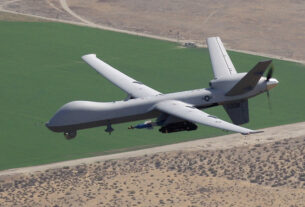IAF fighter requirement for future
The Indian Air Force has projected a requirement of an additional 200 aircraft to be able to put up a credible defence of Indian airspace in the event of a two-front war.
However, there is an acknowledged acceptance that the Chinese can overwhelm Indian air defences by sheer force of numbers but the IAF is sanguine that it will not be a cakewalk.
The Indian dilemma has been the difficulty in quick replacement of fighter aircraft that have outlived their designed life.
Most of these are ex-Soviet MiG-21 aircraft which were scheduled to be replaced by the indigenously developed light combat aircraft, Tejas which has taken an exceedingly long time to fructify. It is now airborne and set for final operational clearance before induction into squadron service.
In the meantime, the IAF has managed to hold the fort with upgradations of aircraft that still have more than a decade of airframe life.
It has made a conscious effort to shift from dedicated role aircraft to multi-role platforms that can handle both air-to-air and air-to-ground missions thereby ensuring that aircraft that would have had to sit it out because they did not have the means of delivery of weapons have now become operational in all environments.
Over the past four decades the MiG-21s have been supplemented by the MiG-Bis and the MiG-29s, Jaguars and Mirage-2000 have been upgraded to generation 4+ level.
The MiG-29s, for example, have undergone major refit with the twin-engined air superiority fighter now has more powerful engines to enable a multi-role configuration that includes both air-to-air missiles for dogfights and self-defence as well as air-to-surface munitions for the ground attack role.
With a whole new suite of avionics (both indigenous as well as acquired from western sources), improved radar and most importantly a range enhancer airborne refueling probe, it is in many respects a brand new aircraft.
On paper the MiG-29 fleet may be counted as just 66 aircraft but with the addition of modern gadgetry that facilitate multi-role operations, the effective efficiency of the fleet has increased substantially.
In the case of the Mirage-2000-a rare case of an aircraft bought off the drawingboard to fulfill the felt need of the time for a deep penetration strike aircraft to supplement and complement the already-in-service Anglo-French Sepecat Jaguar-the aircraft was stripped down to its bare skeleton to rewire and make space for new modern systems for situational awareness, target acquisition and attack roles.
The new Mirage-2000-5 Mk 2 variant was refitted with new radar, missiles, electronic warfare systems and brought to the next generation level of those times.
Long term vision
The first batch of about four aircraft were fitted out in France and the rest was executed by the Hindustan Aeronautics Ltd with transfer of technology and the insertion of an increasing number of indigenously developed avionics.
The modernization process included a glass cockpit environment, helmet-mounted displays with look-down, shoot-down capabilities all contributed to raising the generational ranking of this fighting platform. Cumulatively it led to an extension of the life expectancy by as much as 20 years.
The deep penetration strike aircraft the Sepecat Jaguar has been a permanent feature of the Indian skies since it was acquired in 1979.
This has been achieved by a series of upgradations along the way. One ostensible reason for this longevity is the fact that it is capable of carrying and delivering nuclear weapons in the air-to-surface mode-giving credibility to the minimum nuclear deterrence that India was inching towards after the first nuclear test at Pokhran in Rajasthan in 1974.
Its low-level deep penetration strike capability also lent itself to the landbased maritime strike role. It was for both these requirements that the Jaguar was upgraded around 1995.
To facilitate its low-level penetration the Jaguar was fitted with terrain-following radar, global position system navigation, night flying capability. The aerial refueling probe that was integral to the original aircraft was removed by the IAF because India did not have a tanker aircraft at the time.
This was rectified during the upgrades and the range of the aircraft was increased significantly. The accuracy of the strike capability was improved with the introduction of the Litening targeting pod.
The importance of this particular aircraft within the strategic matrix is highlighted by the fact that the number of aircraft (which is being produced under licence by HAL) was increased in two tranches of 17 and 20 at the turn of the millennium.
In a 2013 programme it was intended to install more powerful engines to improve the operating envelope at medium altitudes where the thrust-to-weight ratio plays a major role. The 2013 project envisages the upgradation of 125 Jaguars.
In the midst of these upgradation programmes India made the sagacious decision of acquiring from Russia after the disintegration of the former Soviet Union (which was India’s main supplier of weaponry of every kind) the licence to produce at HAL the long-range multi-role Sukhoi-30 MKI 2000 fighter.
Its range of 3000 km and endurance of ten hours with aerial refueling brought many of China’s military districts across the Himalayas within reach of the Indian Air Force.
The Sukhois which have taken the baton from the MiG-21s of being the backbone of the IAF airborne capabilities has been in a state of constant upgradation from the moment it was purchased in 1996.
Orders for a batch of 50 were given to the Russians with the proviso that the first batch of eight would be the basic version of the Sukhoi; the second batch of 10 would be fitted with the French and Israeli avionics; the third batch of 10 would feature canard foreplanes for greater maneuverability; and the fourth batch of 12 and the final batch of 10 would feature the more powerful turbofans.
The early lots were fitted with the NOIIM Bars integrated passive electronically scanned array (PESA) radar which can simultaneously track air and ground/sea targets.
It has a 400 km search and 200 km track range. It can track 15 targets and scan four at the same time. This gives it an airborne warning and command systems capability (with vector control to bring other aircraft in the vicinity to specific targets).
It is for this reason that a squadron is based in Bareilly to conduct strategic reconnaissance across the Himalayas along the Sino-Indian Line of Actual Control.
The Sukhoi presence has also been strengthened in Tezpur in Assam and more recently, at the former World War II airbase at Kalaikunda in West Bengal keeping the Chinese threat in view. The IAF intends to raise the numbers of the Sukhoi fleet from 272 to 314.
The current upgradation of the Sukhois is significant that it is to be fitted with the Zhuk active electronically scanned array (AESA) radar and is being prepared to be able to launch the BrahMos 300 km cruise missile and the 1000 km Nirbhaya cruise missile.
Simultaneously new acquisitions are underway. The IAF has indicated a requirement for 200 Tejas indigenous light combat and has placed an order for 40. In the next tranche of aircraft will feature an AESA radar in the Mark IA version of the Tejas.
After an hopelessly convoluted negotiating process India slashed the requirement for the French Rafale medium multi-role combat aircraft to 36 aircraft which are expected to begin arriving 18 months after the signing of the contract-2018.
Further in the future, the recently revived negotiations with Russia should produce a joint venture fifth generation fighter aircraft. Reports suggest that HAL is working on an advanced medium combat aircraft to replace the Jaguar and the Mirage-2000.




